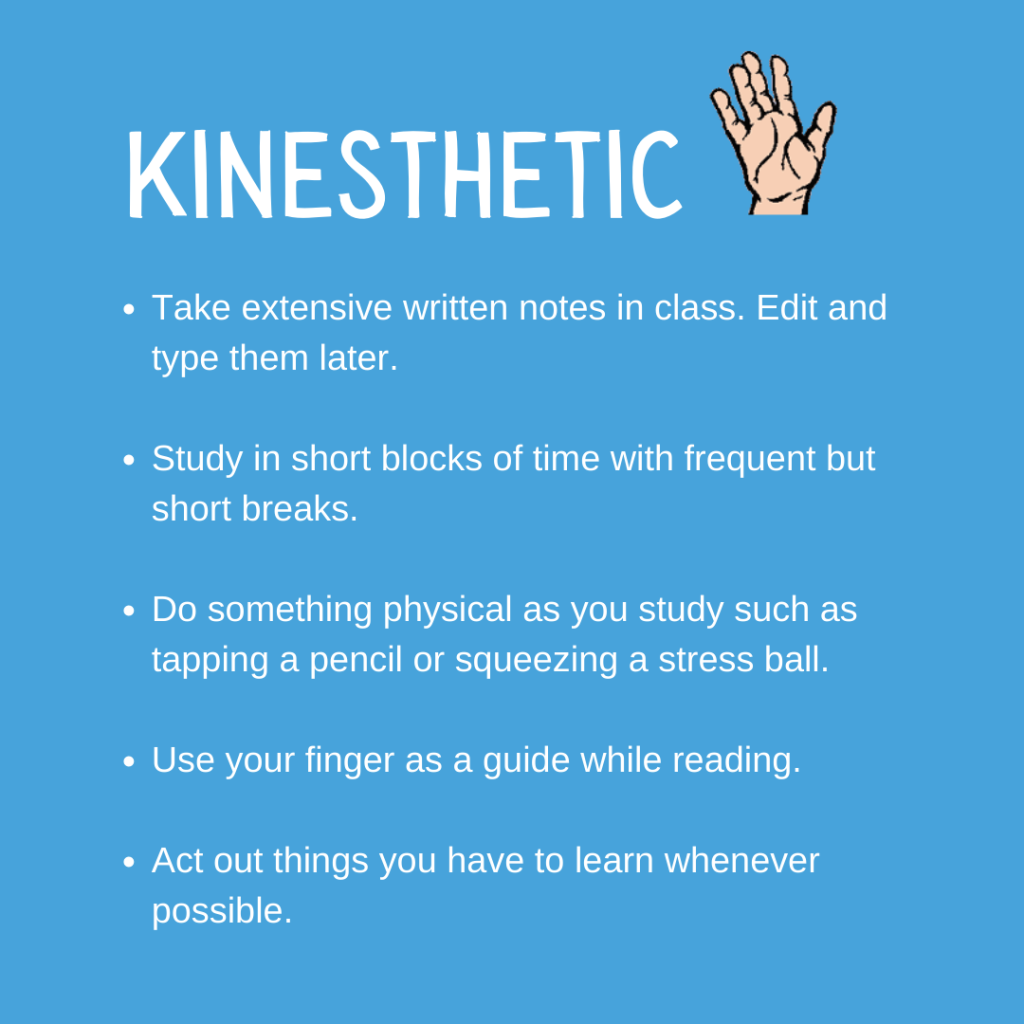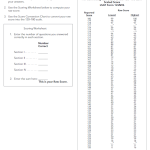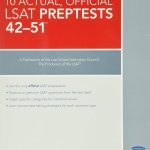Maximize Learning With Dynamic Study Techniques For Kinesthetic Learners: Unlock Your Full Potential Now!
Study Techniques for Kinesthetic Learners
Introduction
Dear Readers,
1 Picture Gallery: Maximize Learning With Dynamic Study Techniques For Kinesthetic Learners: Unlock Your Full Potential Now!

Welcome to this informative article on study techniques for kinesthetic learners. In today’s world, where individuals have different learning styles, it is essential to understand and cater to the needs of kinesthetic learners. Kinesthetic learners are individuals who acquire knowledge and understanding through physical activities and experiences. If you or someone you know is a kinesthetic learner, this article will provide valuable insights and techniques to enhance your study methods.

Image Source: squarespace-cdn.com
In the following sections, we will explore various aspects of study techniques for kinesthetic learners, including what they are, who they are suitable for, when and where to implement them, why they are effective, and how to integrate them into your study routine. By the end of this article, you will have a comprehensive understanding of study techniques that align with your learning style.
What are study techniques for kinesthetic learners?
📚 Kinesthetic learners are individuals who learn best through physical activities and hands-on experiences. The traditional approach of reading textbooks and listening to lectures may not be as effective for these learners. Therefore, study techniques for kinesthetic learners focus on incorporating movement and physical engagement into the learning process.
🤸♂️ Examples of study techniques for kinesthetic learners include role-playing, hands-on experiments, creating models or diagrams, using flashcards or manipulatives, and engaging in physical activities while studying.
🎯 These techniques aim to enhance understanding, retention, and recall by allowing kinesthetic learners to actively participate in their learning journey.
Who can benefit from study techniques for kinesthetic learners?
👨🎓 Study techniques for kinesthetic learners are suitable for individuals of all ages who prefer a hands-on approach to learning. Whether you are a student, a professional, or someone pursuing personal development, these techniques can help improve your study experience.
🏫 Kinesthetic learners are often found in subjects such as physical education, performing arts, and sciences, where practical application and physical engagement play a crucial role. However, these techniques can be applied to any subject to enhance learning outcomes for kinesthetic learners.
When and where should study techniques for kinesthetic learners be implemented?
⏰ Study techniques for kinesthetic learners can be implemented during individual study sessions, group activities, or classroom settings. They can be incorporated into daily study routines, revision sessions, or exam preparations.
📚 Kinesthetic learners can benefit from creating a study environment that allows for movement and physical engagement. This can include using a standing desk, incorporating fidget tools or stress balls, or even studying while walking or performing light exercises.
🎒 Additionally, study techniques for kinesthetic learners can be utilized during study breaks, where physical activities can help reinforce learning and provide a refreshing break from sedentary studying.
Why are study techniques for kinesthetic learners effective?
🧠 Kinesthetic learners have a strong connection between their physical movements and mental processes. Engaging in physical activities while studying helps activate multiple senses, leading to better information processing and retention.
💡 By incorporating movement and physical engagement, kinesthetic learners can better understand abstract concepts, improve focus and concentration, and enhance their overall learning experience.
🏋️♀️ Furthermore, physical activity stimulates the production of endorphins, which can improve mood, reduce stress, and increase motivation, all of which are essential for effective learning.
How to integrate study techniques for kinesthetic learners into your study routine?
🗓️ Here are some practical steps to integrate study techniques for kinesthetic learners into your study routine:
1️⃣ Start by identifying your preferred physical activities and movements that promote focus and engagement.
2️⃣ Incorporate these activities into your study breaks or while reviewing notes.
3️⃣ Use flashcards, manipulatives, or physical objects to reinforce learning and understanding.
4️⃣ Create models or diagrams to visualize complex concepts and enhance comprehension.
5️⃣ Engage in role-playing or simulations to apply knowledge in a practical context.
6️⃣ Experiment with different study environments that allow for physical movement, such as standing desks or walking while studying.
7️⃣ Seek opportunities for hands-on experiences, such as internships, apprenticeships, or practical projects related to your field of study.
Advantages and Disadvantages of study techniques for kinesthetic learners
Advantages:
1. Improved understanding and retention of information.
2. Enhanced focus and concentration during study sessions.
3. Increased motivation and engagement in the learning process.
4. Development of practical skills through hands-on experiences.
5. Better application of knowledge in real-world scenarios.
Disadvantages:
1. Limited applicability in certain subjects that primarily rely on theoretical knowledge.
2. Potential distractions due to excessive movement or physical activities.
3. Requirement of additional resources or tools to facilitate kinesthetic learning.
4. Need for a supportive study environment that accommodates physical engagement.
5. Difficulty in finding opportunities for hands-on experiences in certain fields.
FAQ
Q1: Can kinesthetic learners excel in subjects that require extensive reading and writing?
A1: Absolutely! Kinesthetic learners can excel in any subject by incorporating movement and physical engagement. For subjects that require extensive reading and writing, kinesthetic learners can try techniques such as taking breaks for physical activities, summarizing information through diagrams or models, and discussing concepts with others.
Q2: Are there any online resources or tools specifically designed for kinesthetic learners?
A2: Yes, several online resources and tools cater to kinesthetic learners. These include interactive educational websites, virtual simulations, and online platforms that offer hands-on learning experiences. Exploring these resources can enhance the study experience for kinesthetic learners.
Q3: Can study techniques for kinesthetic learners be combined with other learning styles?
A3: Absolutely! Many individuals have a combination of learning styles, and it is beneficial to integrate techniques from different styles. Kinesthetic learners can incorporate visual aids, auditory cues, or verbal explanations alongside their physical activities to enhance their understanding and retention of information.
Q4: How can teachers accommodate kinesthetic learners in the classroom?
A4: Teachers can accommodate kinesthetic learners by incorporating activities that involve movement and physical engagement. This can include group projects, hands-on experiments, interactive presentations, and incorporating technology or manipulatives into lessons.
Q5: Can study techniques for kinesthetic learners be used in online learning environments?
A5: Yes, study techniques for kinesthetic learners can be adapted for online learning environments. Utilizing virtual simulations, interactive quizzes, and incorporating physical movement during breaks or study sessions can help kinesthetic learners engage with the material and improve their learning outcomes.
Conclusion
In conclusion, study techniques for kinesthetic learners play a vital role in enhancing learning experiences and improving academic performance. By incorporating movement and physical engagement, kinesthetic learners can maximize their understanding, retention, and application of knowledge. Whether you are a student, a professional, or someone pursuing personal development, these techniques can be tailored to your learning style and preferences. We encourage you to explore and experiment with various study techniques to find what works best for you. Remember, learning is a continuous process, and finding strategies that align with your learning style can make a significant difference in your educational journey.
Final Remarks
Dear Readers,
We hope this article has provided valuable insights and techniques for kinesthetic learners. Please note that every individual has unique learning preferences, and it is essential to discover what works best for you. Experiment with different study techniques, seek support from educators or mentors, and embrace the journey of self-discovery in your pursuit of knowledge. Remember, studying is not just about memorizing facts; it is about developing a deep understanding and application of concepts in the real world. We wish you all the best in your educational endeavors!
This post topic: Study Techniques

